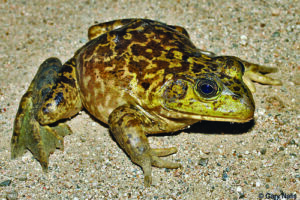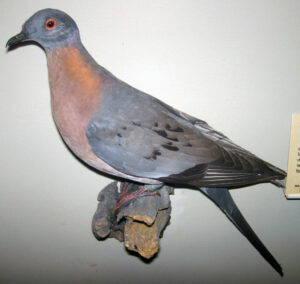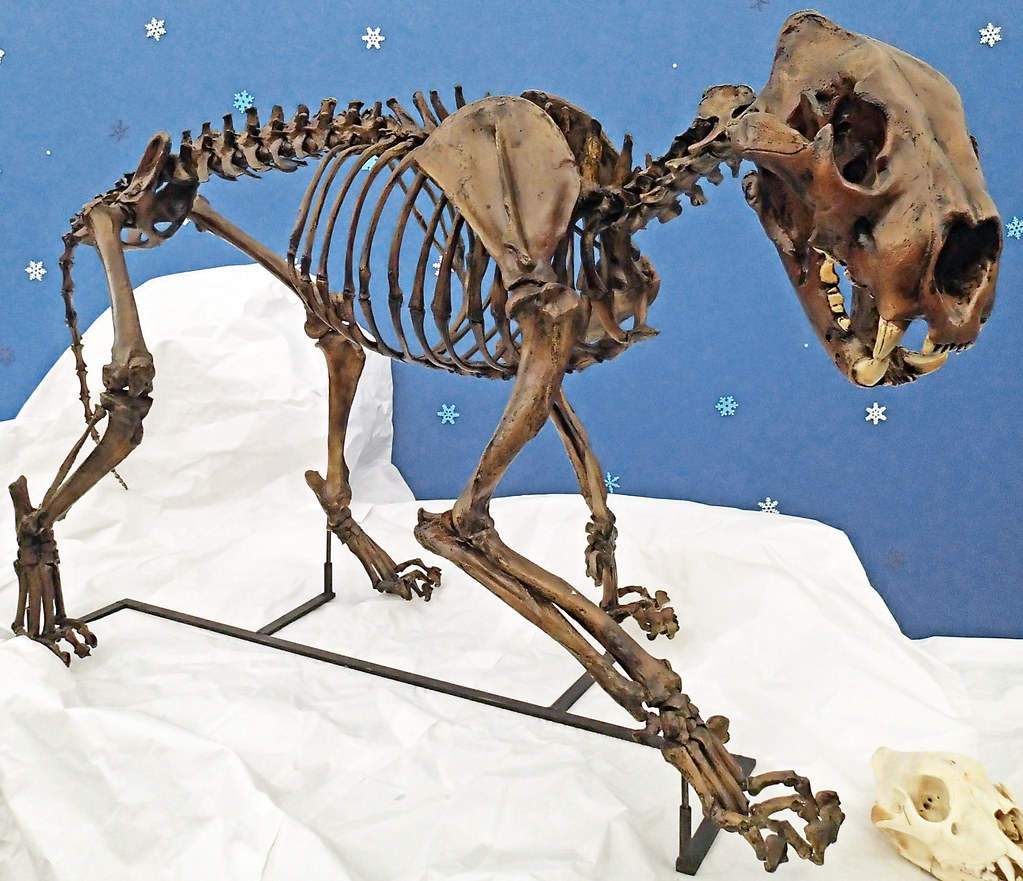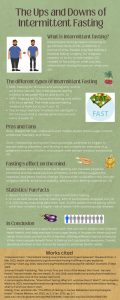
Have you ever considered what it may look like if we were to ever see dinosaurs roaming our Earth? While we may not necessarily be seeing any kind of extinct dinosaurs anytime soon, the idea of bringing back extinct species may not be science fiction anymore. With the developments of new techniques and technologies, we are all approaching a potential reality in which we could bring back animals that were once thought to be extinct. As is the case with any new scientific advancements, it is important that we all take the opportunity to consider what implications such a reality may have. Just because ‘reviving’ an extinct species may be possible, would it be ethical? What kind of impact would this revival have on current conservation efforts? Would the revived species truly be the same extinct organism? How would such an organism fare in today’s world? These are all questions we must consider as our gene editing techniques continue to be improved.

Before a proper discourse on the morality of ‘reviving’ extinct species can begin, it is important to form a basic understanding of the underlying mechanisms behind de-extinction. There are three main methods commonly discussed for the resurrection of extinct species: cloning, genetic engineering, and selective back-breeding.1 Cloning an extinct species would require an extinct animal’s nucleus to be inserted into a surrogate host and would in theory result in an exact copy of the extinct animal to be born.1,3 The IUCN defines de-extinction as “the creation of proxies of extinct species that are functionally equivalent” and recognizes the de-extinct species is not an exact replica.4 In general, this specified classification technically excludes cloning as a form of de-extinction and is why Novak calls for a clarified definition of de-extinction, though other authors have commonly accepted the result as a de-extinction event .3 It is understood that further clarification can provide of the term de-extinction can address questions over classifications, though for the purposes of this article, cloning will also be considered as a mechanism of de-extinction without using additional vocabulary for classifications.
An alternative method discussed within the de-extinction discourse also includes selective-back breeding. This technique targets desired traits for an extinct species, and selectively breeds relatives of that species in an attempt to recreate the desired phenotypic expression.1 By successfully selecting for traits expressed within the originally extinct species, any offspring which are similar enough to replicate the original’s ecologic role would satisfy the IUCN’s classification of de-extinction. In the case of both cloning and selective back-breeding, any attempt to restore an extinct species would require living organisms each time. This severely limits the choice of animals to which de-extinction could be viable, and can help explain why “as a general rule, the more recent the extinction, the greater the chance [a species] might be resurrected”.1 In the case of cloning, the need to target recently-extinct species stems from the issue of sex cell availability from the originally extinct species.1 As for why this may be the case for selective back-breeding, it is possible that the more recent the extinction event is, the less likely it is for existing species to evolve and develop traits incomparable to those of the extinct species.
Of the three methods used within de-extinction efforts, including cloning and selective breeding, gene editing is the most interesting given the novel developments that have occurred within the last few years. For one, gene editing is applicable to a much larger range of extinct animals as it isn’t constrained with the need to have access to living material.9 Cloning and selective back-breeding are by no means insignificant – selective breeding has, for instance, already displayed some results in creating animals which resemble their extinct counterparts. 1 However, for the purposes of this paper, the focus will solely be on genetic engineering given its wider range of applications and deep involvement with de-extinction.
While genetic engineering can be a powerful tool for de-extinction, it is important to note that it also has its own limitations. As the name implies, genetic engineering involves directly manipulating genetic information – in this case to create a hybrid genetic sequence. Using a genome from a related species as a template, the DNA sequence of the extinct species is merged with the template using DNA-editing technologies like CRISPR-Cas9.9 Currently the primary methods used in genetic engineering includes CRISPR-Cas9, a more recent development, and recombinant DNA (rDNA) technology.12 The use of rDNA requires at least two different sources to create a new rDNA molecule, and additionally requires specific enzymes to selectively choose what DNA to cut and transpose into a new cell.13This means DNA must be isolated from a vector (carrier molecule – typically bacterial DNA) and source which contain the gene of interest, DNA must be turned into fragments, rejoined, and combined to rDNA to which further analysis is needed to identify hosts with the desired gene.13 CRISPR-Cas9, however, employs the use of a guide RNA to selectively choose which section of DNA will be cleaved – leading to enhanced specificity that is hard to achieve with previous rDNA technologies.
Unfortunately, the use of gene editing technologies for de-extinction attempts also comes with its own unique challenges. The main issues arise from the limited number of edits that can be made, as well as the tendency for DNA to be destroyed in the fossilization process.9 Cooper 2022). Even DNA which manages to avoid destruction during the process of fossilization still experiences protein degradations for many years.12 Modern genome editing technology only allows for several hundreds of base edits per cycle, many multiple rounds of edits would be required.9 This holds true even when using selective gene editing to only select a subset of the differences to record.3 Despite all these setbacks, the truth still remains that it is possible to map a large portion of a template-extinct DNA strand sequence as shown by Lin and his team though there was still approximately 5% of unmappable DNA.9 Having the capacity to act and whether or not one should act, however, is a different question.
With the advancement of technology, as more options become available for gene editing, more introspective questions must be asked regarding the use of this technology for de-extinction. Assuming that a future in which we are able to introduce de-extinct animals exists, there would need to be serious considerations as to what gene editing may mean for the ecosystems. For ecosystems in which keystone species are absent, the reintroduction of a functionally equivalent species to its extinct counterpart could help restore balances caused by the absence of an extinct species.12 Given the interconnectedness of multiple species known to inhabit the same environment, the loss of a keystone species responsible for regulating other species populations, by acting as either a predator or prey, can upset the delicate balance that is maintained.

Just as the reintroduction of a keystone species can restore an environment to its original state, it is also possible for it to exacerbate the imbalance instead. If the genetically modified organism is too well-suited to its role, its characteristics may instead cause it to outcompete other organisms and pass down the traits responsible for this competitive edge.12 A similar sentiment is shared by others like Babcock, who explore the possibility that de-extinct animals would act in a similar fashion as an invasive species would.1 The effects that introducing a gene-edited organism could have extend beyond simply providing additional competition among species. It could disrupt the food chain, or even introduce new vectors and diseases transmissible towards humans.1 On the other side of this same spectrum, the genetic information of extinct animals may cause those same species to be unsuited for their native habitat, given that the environment would likely be much different than it originally was.1

There are also additional considerations that would need to be held regarding the de-extinction of a species – like its individual wellbeing. As pointed out by Friese and Marris, a de-extinct animal may experience solitude and it is unlikely anyone would be qualified to rear the animal assuming it was long extinct.25 To bring back an extinct animal without enough information to help maintain it would simply be an action devoid of any consideration for the animal’s well-being and dignity. Of course, to bring back any kind of animal prior to the Holocene epoch still remains unlikely due to the extent to which genetic information would be degraded.12 A more realistic scenario is a de-extinction effort focused on more recently extinct species such as the passenger pigeon.12
The issue of gene editing not only raises questions for the viability of an animal in the wild and its care, but also for the social implications it would have on conservation efforts. While I may have used the term de-extinction for this discussion, there is a call to introduce a new term that could encompass the moral weight associated with it.28 According to Campagna and her colleagues, the use of the word de-extinction causes the opportunity to create a miraculous gene-editing technology to blind us from the moral need to protect and respect nonhuman life.28 If humanity were to ever gain the ability to bring back an extinct species, we run the risk of trivializing what extinction means.28 This isn’t to say that the gene-editing technology itself should be considered ‘evil’, but that we should be more mindful of why and how we use this technology. After all, there have been some proposed alternatives for how we could use the same technology used in de-extinction for current conservation efforts. By using the same gene-editing technology involved in de-extinction, like CRISPR-Cas9, existing species can also benefit. As Desalle and Amato note, gene editing of existing species can help provide an increased chance for survival and lower numbers of invasive species to manageable amounts.31 It should be understood that while this touches on the ethical issue of genetically modifying living animals, this is simply listed as an alternative use for gene-editing technology in the context of de-extinction. Any discussion on genetically modified animals would not be done justice in a paper dedicated to de-extinction.
It is self-evident that the gene-editing potential that is involved is a pandora’s box of sorts. With developments in recombinant DNA technology, newer technologies such as CRISPR have allowed us to peer into this box. However, having the ability to even attempt to recreate an extinct species’ genome is awe inspiring and should be handled with utmost care. While it is unlikely we will be capable of resurrecting prehistoric dinosaurs in the foreseeable future, we currently have the means to bring back recently extinct species. The introduction of any de-extinct species brings many different considerations to the discussion of nature conservation. Concerns can appear in the form of discussion over appropriate terminology and classification of conservation statuses, and the general impact the introduction of the species would bring. It raises questions like how would such an animal interact with its environment? How will the scientific community care for said animal? Should we even consider creating artificial life using extant DNA? As recombinant technologies continue to develop, and our ability to genetically modify information is improved, we will need to ask ourselves these questions. Failure to do so would only result in an uninformed, and frankly irresponsibly, attempt at re-introducing these species on Earth. Taking this all into account, can we truly say that the world is ready to seriously attempt to make permanent extinction a thing of the past?
- Babcock, H. M. (2019). The Genie Is Out of the De-Extinction Bottle: A Problem in Risk Regulation and Regulatory Gaps. Virginia Environmental Law Journal, 37(3), 170–206. ↵
- Babcock, H. M. (2019). The Genie Is Out of the De-Extinction Bottle: A Problem in Risk Regulation and Regulatory Gaps. Virginia Environmental Law Journal, 37(3), 170–206. ↵
- Novak, B. J. (2018). De-Extinction. Genes, 9(11), Article 11. https://doi.org/10.3390/genes9110548. ↵
- Novak, B. J. (2018). De-Extinction. Genes, 9(11), Article 11. https://doi.org/10.3390/genes9110548. ↵
- Novak, B. J. (2018). De-Extinction. Genes, 9(11), Article 11. https://doi.org/10.3390/genes9110548. ↵
- Babcock, H. M. (2019). The Genie Is Out of the De-Extinction Bottle: A Problem in Risk Regulation and Regulatory Gaps. Virginia Environmental Law Journal, 37(3), 170–206. ↵
- Babcock, H. M. (2019). The Genie Is Out of the De-Extinction Bottle: A Problem in Risk Regulation and Regulatory Gaps. Virginia Environmental Law Journal, 37(3), 170–206. ↵
- Babcock, H. M. (2019). The Genie Is Out of the De-Extinction Bottle: A Problem in Risk Regulation and Regulatory Gaps. Virginia Environmental Law Journal, 37(3), 170–206. ↵
- Lin, J., Duchêne, D., Carøe, C., Smith, O., Ciucani, M. M., Niemann, J., Richmond, D., Greenwood, A. D., MacPhee, R., Zhang, G., Gopalakrishnan, S., & Gilbert, M. T. P. (2022). Probing the genomic limits of de-extinction in the Christmas Island rat. Current Biology, 32(7), 1650-1656.e3. https://doi.org/10.1016/j.cub.2022.02.027. ↵
- Babcock, H. M. (2019). The Genie Is Out of the De-Extinction Bottle: A Problem in Risk Regulation and Regulatory Gaps. Virginia Environmental Law Journal, 37(3), 170–206. ↵
- Lin, J., Duchêne, D., Carøe, C., Smith, O., Ciucani, M. M., Niemann, J., Richmond, D., Greenwood, A. D., MacPhee, R., Zhang, G., Gopalakrishnan, S., & Gilbert, M. T. P. (2022). Probing the genomic limits of de-extinction in the Christmas Island rat. Current Biology, 32(7), 1650-1656.e3. https://doi.org/10.1016/j.cub.2022.02.027. ↵
- Cooper, T. J. (2022). Managing the Anthropocene: Genetic Engineering, De-Extinction, and the Uncertain Future of Ecosystem Management Student Notes. Rutgers University Law Review, 75(2), 705–742. ↵
- Chaudhuri, K. (2013). Recombinant DNA Technology. Energy and Resources Institute, The. http://ebookcentral.proquest.com/lib/stmarytx-ebooks/detail.action?docID=6318198. ↵
- Chaudhuri, K. (2013). Recombinant DNA Technology. Energy and Resources Institute, The. http://ebookcentral.proquest.com/lib/stmarytx-ebooks/detail.action?docID=6318198. ↵
- Lin, J., Duchêne, D., Carøe, C., Smith, O., Ciucani, M. M., Niemann, J., Richmond, D., Greenwood, A. D., MacPhee, R., Zhang, G., Gopalakrishnan, S., & Gilbert, M. T. P. (2022). Probing the genomic limits of de-extinction in the Christmas Island rat. Current Biology, 32(7), 1650-1656.e3. https://doi.org/10.1016/j.cub.2022.02.027. ↵
- Cooper, T. J. (2022). Managing the Anthropocene: Genetic Engineering, De-Extinction, and the Uncertain Future of Ecosystem Management Student Notes. Rutgers University Law Review, 75(2), 705–742. ↵
- Lin, J., Duchêne, D., Carøe, C., Smith, O., Ciucani, M. M., Niemann, J., Richmond, D., Greenwood, A. D., MacPhee, R., Zhang, G., Gopalakrishnan, S., & Gilbert, M. T. P. (2022). Probing the genomic limits of de-extinction in the Christmas Island rat. Current Biology, 32(7), 1650-1656.e3. https://doi.org/10.1016/j.cub.2022.02.027. ↵
- Novak, B. J. (2018). De-Extinction. Genes, 9(11), Article 11. https://doi.org/10.3390/genes9110548. ↵
- Lin, J., Duchêne, D., Carøe, C., Smith, O., Ciucani, M. M., Niemann, J., Richmond, D., Greenwood, A. D., MacPhee, R., Zhang, G., Gopalakrishnan, S., & Gilbert, M. T. P. (2022). Probing the genomic limits of de-extinction in the Christmas Island rat. Current Biology, 32(7), 1650-1656.e3. https://doi.org/10.1016/j.cub.2022.02.027. ↵
- Cooper, T. J. (2022). Managing the Anthropocene: Genetic Engineering, De-Extinction, and the Uncertain Future of Ecosystem Management Student Notes. Rutgers University Law Review, 75(2), 705–742. ↵
- Cooper, T. J. (2022). Managing the Anthropocene: Genetic Engineering, De-Extinction, and the Uncertain Future of Ecosystem Management Student Notes. Rutgers University Law Review, 75(2), 705–742. ↵
- Babcock, H. M. (2019). The Genie Is Out of the De-Extinction Bottle: A Problem in Risk Regulation and Regulatory Gaps. Virginia Environmental Law Journal, 37(3), 170–206. ↵
- Babcock, H. M. (2019). The Genie Is Out of the De-Extinction Bottle: A Problem in Risk Regulation and Regulatory Gaps. Virginia Environmental Law Journal, 37(3), 170–206. ↵
- Babcock, H. M. (2019). The Genie Is Out of the De-Extinction Bottle: A Problem in Risk Regulation and Regulatory Gaps. Virginia Environmental Law Journal, 37(3), 170–206. ↵
- Friese, C., & Marris, C. (2014). Making De-Extinction Mundane? PLOS Biology, 12(3), e1001825. https://doi.org/10.1371/journal.pbio.1001825 ↵
- Cooper, T. J. (2022). Managing the Anthropocene: Genetic Engineering, De-Extinction, and the Uncertain Future of Ecosystem Management Student Notes. Rutgers University Law Review, 75(2), 705–742. ↵
- Cooper, T. J. (2022). Managing the Anthropocene: Genetic Engineering, De-Extinction, and the Uncertain Future of Ecosystem Management Student Notes. Rutgers University Law Review, 75(2), 705–742. ↵
- Campagna, C., Guevara, D., & Le Boeuf, B. (2017). De-scenting Extinction: The Promise of De-extinction May Hasten Continuing Extinctions. The Hastings Center Report, 47(4), S48–S53. ↵
- Campagna, C., Guevara, D., & Le Boeuf, B. (2017). De-scenting Extinction: The Promise of De-extinction May Hasten Continuing Extinctions. The Hastings Center Report, 47(4), S48–S53. ↵
- Campagna, C., Guevara, D., & Le Boeuf, B. (2017). De-scenting Extinction: The Promise of De-extinction May Hasten Continuing Extinctions. The Hastings Center Report, 47(4), S48–S53. ↵
- Desalle, R., & Amato, G. (2017). Conservation Genetics, Precision Conservation, and De-extinction. The Hastings Center Report, 47(4), S18–S23. ↵



1 comment
Mariana Chamorro
Luis, your piece on bringing back extinct species is both fascinating and thought-provoking. I love how you’ve explained complex scientific concepts in such an accessible way. Keep up the great work in making these topics engaging and understandable for everyone!